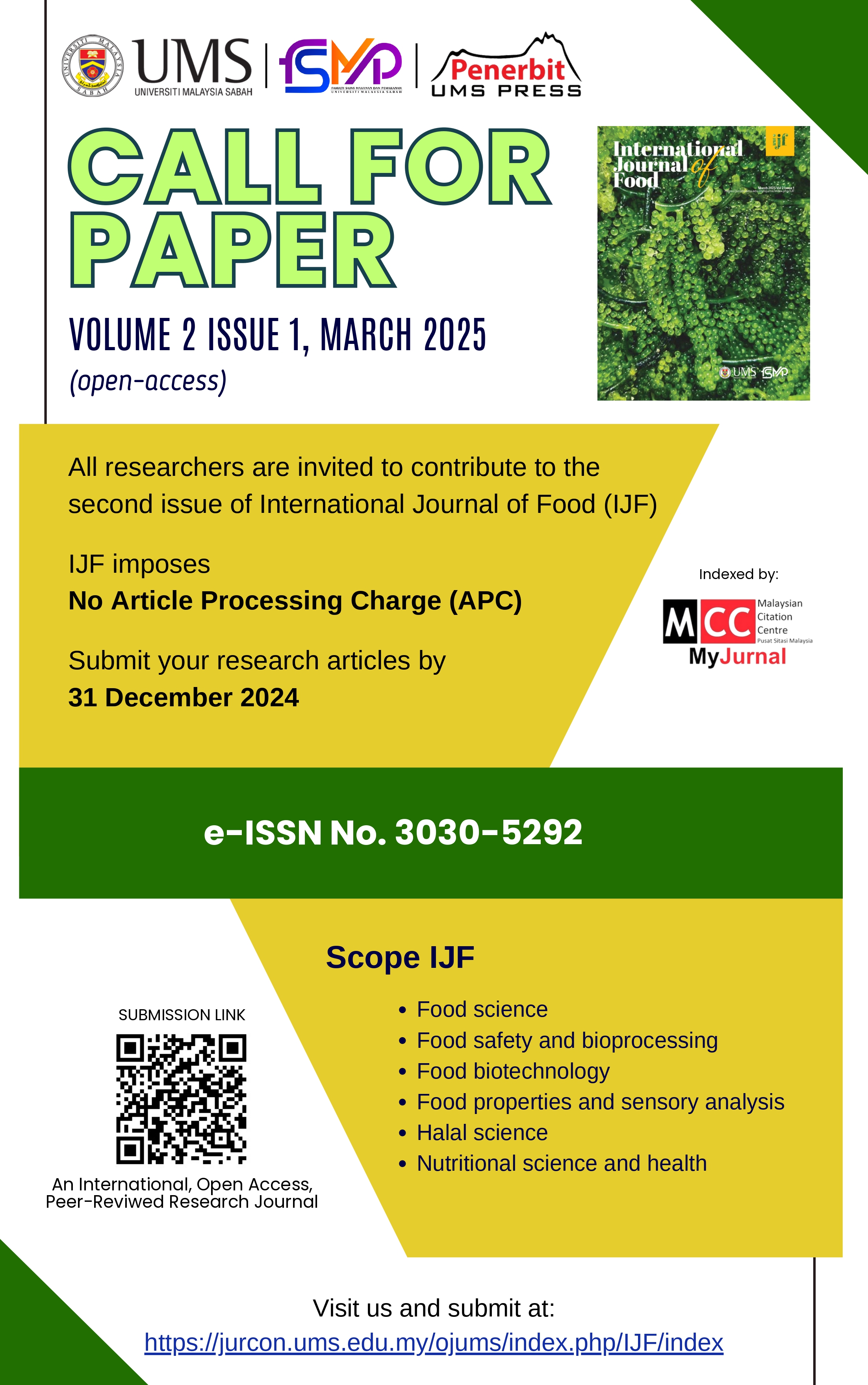A Posteriori Dietary Patterns among Children in Sabah: A Cross-Sectional Study
DOI:
https://doi.org/10.51200/ijf.v1i1.4912Keywords:
children, dietary pattern, á posteriori, nutrition status, SabahAbstract
Introduction: A dietary pattern reflects the combination of foods of an individual’s overall eating habits and there is accumulating evidence that dietary patterns are closely associated with health outcomes. Therefore, this study aimed to determine the á posteriori dietary patterns among children in Sabah. Methods: A cross-sectional study was conducted from December 2022 to February 2023 in Kota Kinabalu and Tawau. A total of 199 children aged 5 to 12 years were recruited. Body weight, height, and body mass index were determined using standard protocols. Dietary intakes were assessed using the 24-hour diet recall method and dietary patterns were derived using the principal component analysis based on 20 food groups. Results: Three dietary patterns emerged: “Fish Dietary Pattern”, “Fruits Dietary Pattern”, and “White Rice Dietary Pattern”. There were significantly more children from households with monthly income less than RM 2500 (54.0%, P<0.001) and from Tawau (74.7%, P<0.001) adhered to the “Fish Dietary Pattern”. Children adhered to the “Fish Dietary Pattern” were taller (P=0.016) and had greater intakes of energy (P<0.001), carbohydrate (P<0.001), and protein (P<0.001), while children adhered to the “White Rice Dietary Pattern” had greater weight (P<0.001), height (P=0.003), BMI (P=0.003), as well as higher intakes of energy (P=0.010), carbohydrate (P<0.001), and protein (P=0.032). Conclusion: There were three distinct dietary patterns among children in Sabah, which were associated with growth indicators and nutrient intakes.










